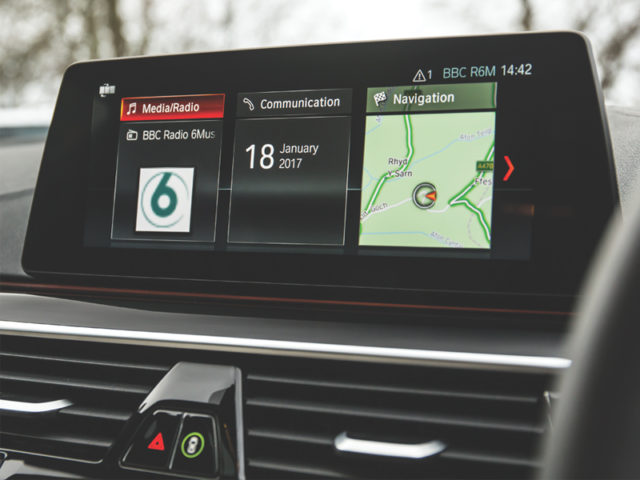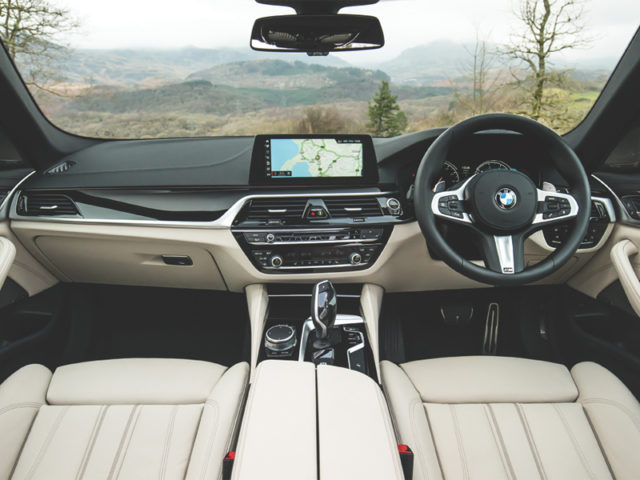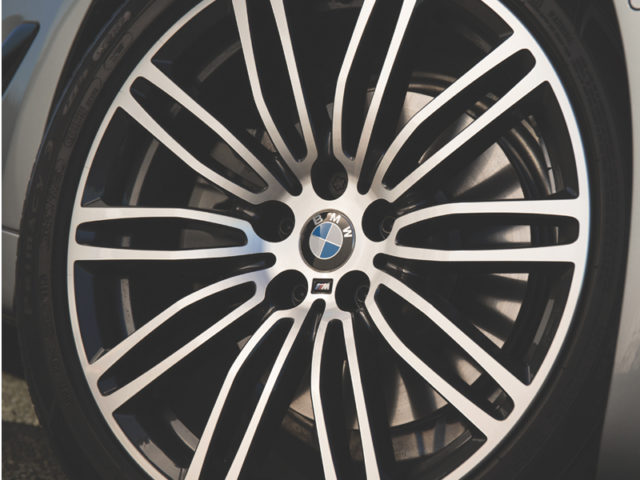Road Test: BMW 5 Series
The 5 Series isn’t short of rivals, but it’s still setting the standard, says Alex Grant.
With 45 years, six generations and 7.9 million global sales, the 5 Series has always succeeded by sticking to a very specific, very appealing design brief. It’s the brand-defining driver’s car, the saloon that’ll make light work of long motorway trips but still reward you for taking the scenic route home.
Which means, if you’re driving the outgoing version, its replacement ticks the right boxes. It’s a little larger in all directions, but also stiffer and lighter thanks to wider use of exotic materials and optimised construction. With a lower centre of gravity and perfect front-rear weight balance, it drives more like a coupe than an executive saloon; sure-footed and responsive in ways some smaller cars wish they could match.
Cutting weight means the engines perform better too. It adds up to more power per tonne, and more miles per gallon without actually increasing their output. This might once have been defined by six-cylinder petrol engines, but the UK fleet-favourite four-cylinder 520d doesn’t feel like a compromise; 68.8mpg with the standard-fit eight-speed automatic gearbox, yet effortlessly quick with it.
Even the 530d, a six-cylinder, 265bhp Autobahn-storming Continent-crosser, returns 60.1mpg. That’s the sort of economy which, until recently, was a selling point for the outgoing car’s 520d EfficientDynamics. Add in xDrive for the diesels, a plug-in hybrid and the new 520d EfficientDynamics and there’s a strong line-up of engines to suit any business need.
An exhilarating drive is only the tip of the iceberg. It’s bigger than the 7 Series of the late 1990s, so there’s room to stretch out both rows, with sculpted seats to suit most shapes and sizes of driver and an exceptionally well-finished cabin. Even the most popular M Sport version, on its 19-inch wheels, doesn’t thump over rough road surfaces, and there’s barely any engine, wind or road noise at high speeds. However, the 520d can be a little coarse when worked hard.
BMW hasn’t simply moved the old car’s best points forward a generation. Adopting technology from the 7 Series, there are options to equip it with a gesture-controlled dashboard, a smartphone-like key with a colour touchscreen for remote status checks, and the ability to drive itself in and out of tight spaces with nobody on board. Integration with the Amazon Echo system means it can remotely control domestic appliances and central heating, if drivers have internet-connected devices at home.
More relevant to fleets, BMW’s advanced cruise control can now adjust itself based on speed limits, maintain a distance from the car in front and its position in a lane at speeds between a crawling traffic jam and 133mph. It also collaborates with the optional Professional Navigation system, pre-planning braking for corners and built-up areas to improve comfort, and using forward-facing radar and camera systems to detect when it’s not worth turning the engine off while stopped.
The latest version of iDrive is impressive, too. It’s the first with a touchscreen as well as the rotary commander, making for an intuitive, lag-free system with plenty of business-relevant features. Drivers can rearrange ‘tiles’ across the homescreen to access useful features quickly, and it connects to Microsoft Office 365 for remote access to e-mails, calendars and contacts.
Of course, it has to push the boundaries, because it’s never had so many rivals – the equally cutting-edge new E-Class among them. That tight design brief that defined the original 5 Series has never been more relevant, but it’s also never been harder to live up to.What we think
The 5 Series impresses not only for its cutting-edge technology, but because the car that’s underneath does everything so brilliantly. Aside from the excellent new Mercedes-Benz E-Class, nothing in this segment comes close.

















